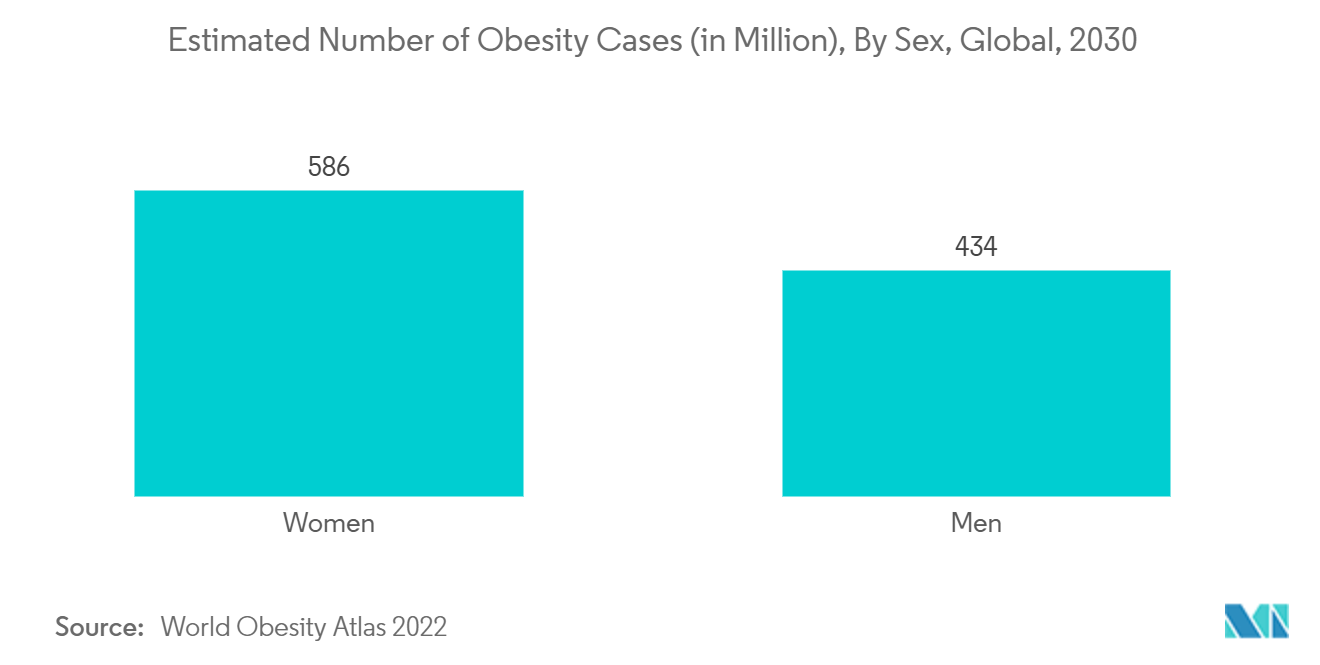Market Trends of Indirect Calorimeter Industry
Hospital Segment Expected to Hold a Significant Market Share Over the Forecast Period
The hospital segment is anticipated to witness growth in the market studied. Indirect calorimetry measures the gases in the air one exhales as a way to determine how many calories one's body burns at rest. Indirect calorimetry (IC) is the gold standard for evaluating calorie needs.
IC is mostly used for all the patients of a tertiary care hospital, with more emphasis on patients with obesity-related records. IC can be used to target nutritional goals, as both protein and AC/REE (administered calories to resting energy expenditure ratio) show a trend toward higher survival at the cost of increased length of stay.
For instance, as per an article published in September 2022 in the Multidisciplinary Digital Publishing Institute (MDPI) Journal, the most precise method of calculating energy expenditure is indirect calorimetry, which gauges carbon dioxide and oxygen concentrations during inspiration and expiration. In intensive care units (ICUs), this method is now advised as the gold standard for determining energy needs.
Furthermore, as per an article published in May 2022 in BioMed Central’s (BMC) journal, when energy objectives were based on IC, short-term mortality decreased by 23%. As per the same source, routine use of indirect calorimetry in critically ill patients showed potential improvements in the outcome with indirect calorimetry-guided nutrition therapy. Hence, the increase in advantages offered by IC alone and in combination are expected to boost the segment’s growth over the forecast period. Similarly, as per the article published in September 2022 in Springer, critically injured trauma patients found that ongoing IC led to better, more personalized care that took into account changing metabolic dynamics over time.
Hence, due to the increase in advantages offered by IC in critically ill patients in hospital settings and the rise in demand for IC compared to direct calorimetry, the segment studied is expected to witness growth over the forecast period.

North America Expected to Hold a Significant Market Share Over the Forecast Period
North America is expected to hold a significant share of the market due to the increasing obese population across the region and the availability of better healthcare infrastructure, coupled with rising awareness about facilities available for obese people.
For instance, as per the World Obesity Atlas 2022, the estimated adult prevalence is likely to be 46.9% in the United States by 2030. As per the same source, the estimated population of women above the body mass index of 30 kg is likely to be 6,271,328 by 2030 in Canada. Hence, the rise in obesity cases across regional countries is expected to increase the demand for calorie-deficit lifestyles and calorie measurements, which are likely to boost market growth over the forecast period.
Furthermore, as per an article published in November 2022 in Cell Report, researchers assessed the impact of dietary alteration to a high-fat diet (HFD) on the intestine. A significant change in diet over time can affect metabolism and physiology. In the United States, a caloric imbalance may be one factor contributing to obesity. The article demonstrated an increased chance of adopting indirect calorimeters across North American countries due to the population’s high risk of obesity.
Hence, due to the increase in the obese population and rise in product launches, North America is expected to hold a significant market share over the forecast period.


